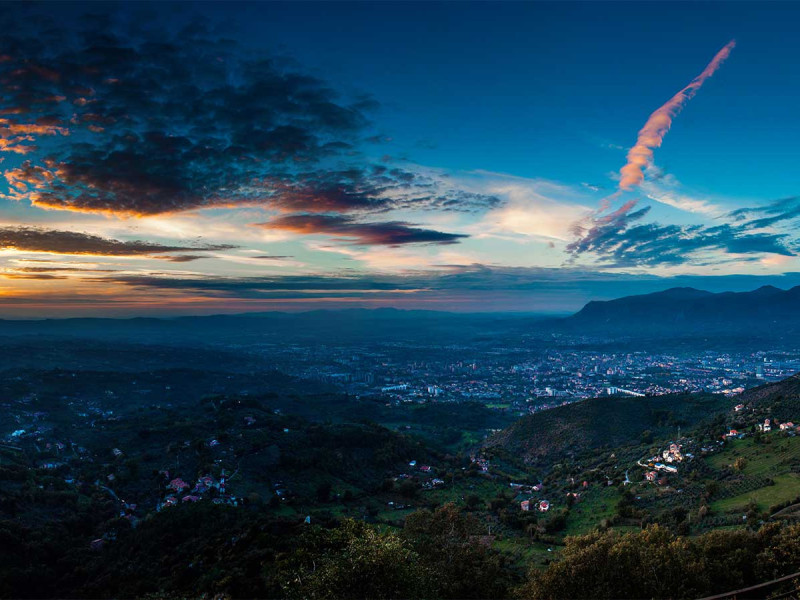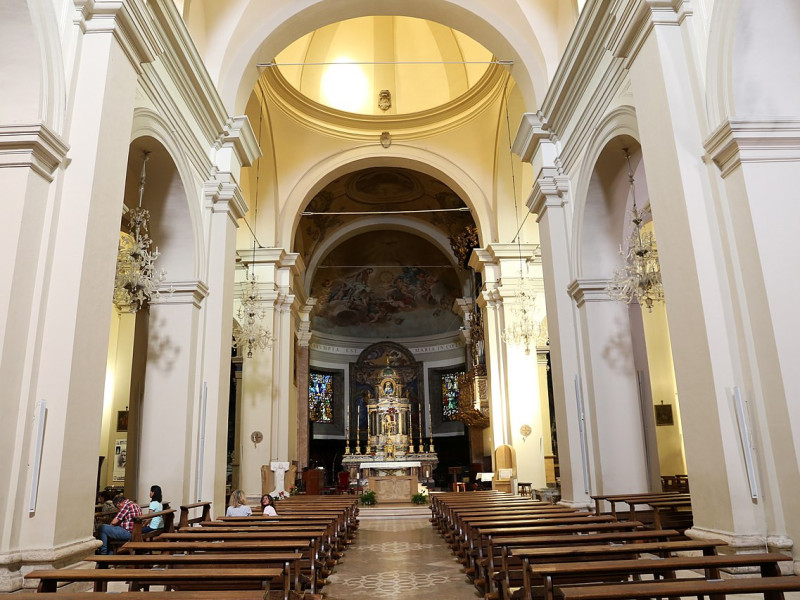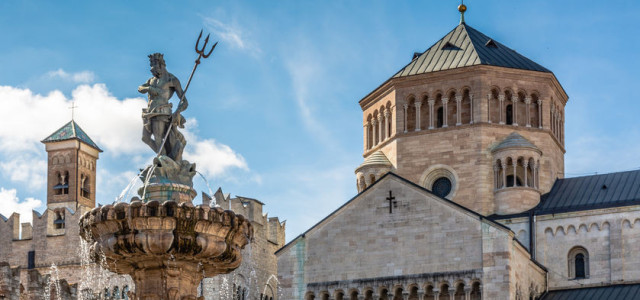The Cathedral of Santa Maria Assunta in Terni
The Duomo, the mother church of the Diocese of Terni-Narni-Ameli, is chock full of history and culture: a sacred place that also stands out also for the numerous artistic works that are found inside.
In Terni
Terni is located almost at the center of Italy and rises on the banks of the Nera and the Serra Rivers, in a large and fertile basin. This basin is enclosed by the Umbria-Marche Apennines and the Lazio sub-Apennines. It is located about 80 kilometers from Perugia, 90km from L'Aquila and 100km from Rome. It is truly a unique place that embraces history, culture and charm and which houses, among other things, the famous cathedral of Santa Maria Assunta.

The Cathedral of Santa Maria Assunta
As a result of various interventions, the current cathedral of Santa Maria Assunta has a façade that is formed by a large portico from which three Romanesque doors open. It is enriched by numerous friezes, and a double row of columns.
The upper part of the Cathedral is composed of a balustrade in travertine and the statues of eight Terni bishops - including St. Valentine. On the inside, the building is laid out according to the floor plan of a Latin cross with three naves which contain pillars, and small transept anf aspe chapels.

Among the artistic works contained in the cathedral you can find: a wooden choir from 1559, a fresco of the counter-façade representing the patron saints of the city and angels of the seventeenth century, the baptismal font with the coat of arms of the Municipality, the canvas depicting Noli me tangere, the canvas that demonstrates Jesus in the garden of olive trees, the tabernacle of Carlo Murena that contains the relics of the blood of Christ, an organ from the 17th century, the tomb of Saint Anastasio which was built using a pagan altar enriched with panels cosmatesche, and a counter-fresco by the Argentine painter Ricardo Cinalli that represents the scene of the resurrection during the Last Judgment.
A little bit of history
According to tradition, the first cathedral was built in the sixth century on the remains of a Roman pagan temple and was ordered by the Bishop of Terni - Anastasio.
The sacred building was probably constructed around the tenth century, right next to the aforementioned Bishop's tomb. It was backed up by the episcopal role - in fact - during the sixth century it proclaimed to have defended the city from the invasion by the Lombards.
After a series of interventions (in the IX and XII centuries), other consolidated works were carried out in the 1930s and brought to light three underground apses and the remains of a rose window with lateral mullioned windows.
All that remains of the Romanesque cathedral are the elevation of the central nave, the reconstruction of the tribune and the bell tower, the building of the baptismal font and the side chapels, and the definitive arrangement in baroque style both of the cathedral and the square located in the front.
All rights reserved © Copyright Altrama Italia
![Immagine descrittiva - BY [Sailko/Wikipedia] Immagine descrittiva - BY [Sailko/Wikipedia]](https://api.viaggiart.com/resources/images/xl/list/image/171985-5720ba3e264f61f48850525d348c3925-1565379022.jpg)






